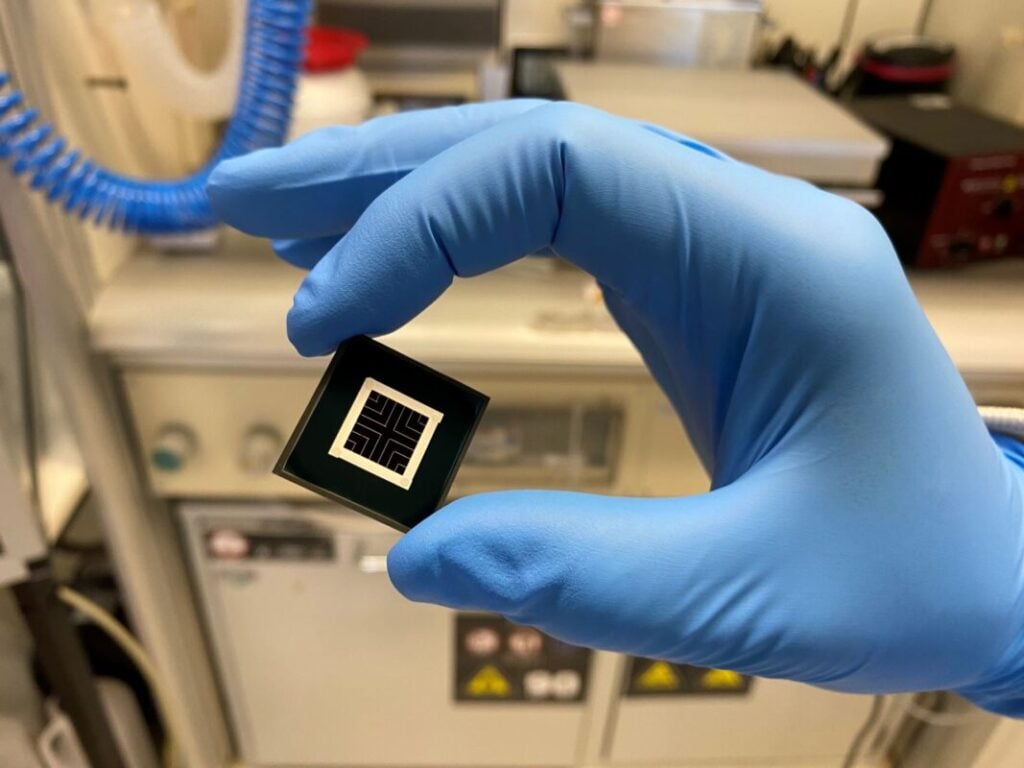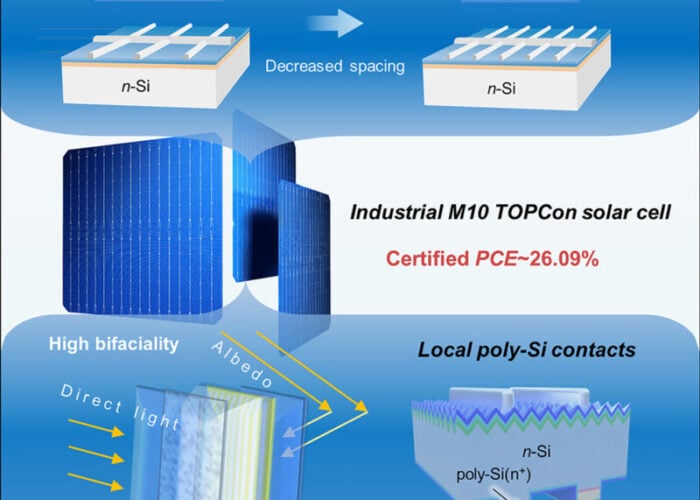
Chinese solar manufacturer Risen Energy has produced what it called a “record” conversation efficiency on a heterojunction technology (HJT) silicon-perovskite tandem solar cell.
The cell was recorded with a 30.99% conversion efficiency, which Risen said was certified by the Chinese National Photovoltaic Product Quality Supervision and Inspection Center.
Try Premium for just $1
- Full premium access for the first month at only $1
- Converts to an annual rate after 30 days unless cancelled
- Cancel anytime during the trial period
Premium Benefits
- Expert industry analysis and interviews
- Digital access to PV Tech Power journal
- Exclusive event discounts
Or get the full Premium subscription right away
Or continue reading this article for free
The company did not specify the size of the cell in its announcement, though reported record efficiencies are generally confined to laboratory-sized test cells, rather than industrial products which could be incorporated into a usable module. Last month a European consortium claimed a 30.8% efficiency rating on a 9cm2 square cell, which was regarded as a notable increase in size from previous thumbnail-sized offerings.
Yang Bochuan, the dean of the Risen Energy Global Photovoltaic Research Institute, which achieved the record, said the company will “continue to drive the innovative development of HJT+ technology adhering to the principles of mass producibility, high cost-effectiveness, and ultra-low carbon emissions.”
Silicon-perovskite tandem cells have long been touted as the next generation in solar PV technology, as they offer higher light-to-power conversion efficiencies and have the potential to be cheaper and less carbon-intensive to produce than pure silicon cells.
The products are generally constructed with a base layer of silicon technology overlaid with perovskite-based thin films, allowing the cell to absorb a much wider range of the light spectrum. HJT cells have a pedigree in tandem PV, as it is the base technology used by Oxford PV—the widely regarded market leader in the tech—in its perovskite tandem products. Oxford PV shipped what it said were the market’s first commercial silicon-perovskite tandem modules last year, which had a conversion efficiency of 24.5%.
Oxford PV told PV Tech Power, our quarterly downstream industry journal, that HJT is particularly well suited to layered tandem applications, as opposed to competing technologies like tunnel oxide passivated contact (TOPCon) cells. You can find that deep-dive article here (premium access).
In its “record” announcement, Risen Energy said similarly: “The structure of heterojunction cells is naturally suited to serve as the bottom cell in tandem cells. In contrast, other types of crystalline silicon cells, lacking an ITO film, require structural redesign when developing tandem technology, which undoubtedly increases costs and complexity.”
A five-year project conducted by six branches of the German Fraunhofer research institute into “next-generation” tandem solar technology found that silicon-perovskite tandems are the “prerequisite” technology for making the leap beyond the current generation of PV products.
However, sceptics abound. Radovan Kopecek, founder of the technology research institute ISC Konstanz and highly regarded solar technology expert, told us that perovskite products would be resigned to the margins of the energy transition as low-priced and ever-more-efficient silicon products remain unassailable in market terms.






